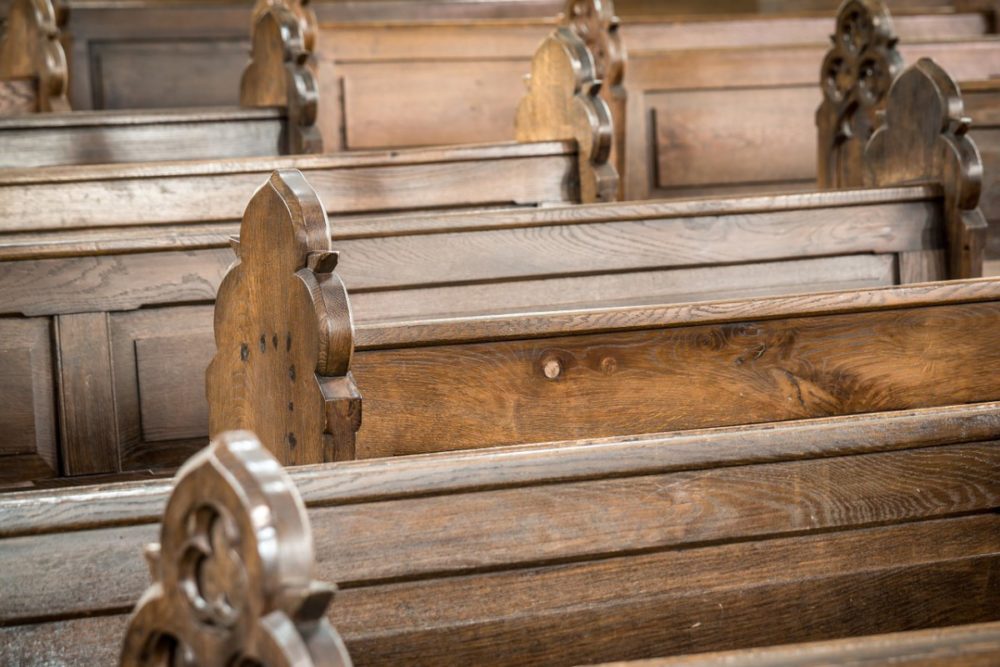There is quite a bit of recent discussion about the “future” of the Southern Baptist Convention, and whether its icon will be the jeans-wearing, stool-sitting, Message-quoting, Acts29-giving preacher, or the “traditional” suit-wearing, pulpit-occupying, CooperativeProgram-giving preacher.
(See the SBC Voices article on the subject, which cites opinion blogs by both Ed Stetzer and Nathan Finn).
I’m not certain that the Hobson’s choice is an accurate reflection of the state of the Convention. There seems to be a false dichotomy between “traditional” and “hip”, but the discussion raises some interesting questions about the nature of the SBC.
First, in the SBC Voices article, Howell Scott says this about Ed Stetzer: “For those in positions of power within the Convention — who are supposed to be “denominational servants” – to convey such condescension and disdain for ”traditional” Southern Baptist pastors is simply amazing!” Read Stetzer’s article and tell me if you can find a source for Scott’s hysteria other than thin air.
But poorly-aimed attacks on fuzzy and illusory targets are not my primary concern. Two aspects of this article warrant attention.
First, another conclusory statement by Scott deserves a response: “The last of these — cooperation in and through the Cooperative Program — really gets to the heart of the matter about what it means to be a Southern Baptist” [emphasis mine].
Really? Are we certain that we want to ignore, in this context, other important Baptist beliefs? The functional authority of Scripture, regenerate membership, believers’ baptism by immersion, freedom of conscience, and congregational authority are viable contenders for the “what it means to be a Southern Baptist” award.
The Cooperative Program is certainly a laudable effort to concentrate energy and resources toward missions. But we should nevertheless be careful about the level of definitive importance we place on it. Because if the primary aspect of being a Southern Baptist is that we have the best clearing-house for money to be used in a myriad of purposes, then we are not much different than a more efficient Red Cross, or a sanctified United Way.
Second, a comment by Dave Miller raises more questions than it answers: “You do not have to be a Baptist to be a Christian, but you have to believe basic Baptist doctrine to be Baptist. We need to define those parameters as broadly as possible. Baptism by immersion of believers, priesthood of believers, soul competency, and very little else.”
Admittedly, this is a comment in the stream, and does not reveal Scott’s opinion on the issue, but it reveals the divide about “crucial” Southern Baptist distinctives. Miller’s list, as you see, does not mention the Cooperative Program.
Contrary to Miller’s predicate, “basic Baptist doctrine” is not so easy to define. At one time, basic Bible doctrine would be the Baptist Faith & Message, but many of our non-Southern Baptist friends could agree with most of the BF&M. Miller gets closer to cracking the nut when he ostensibly defines the parameters broadly by limiting those things necessary for one to believe and practice in order to “be Baptist”: believers’ baptism by immersion, the priesthood of believers, and soul competency. When Miller says “very little else,” he politely allows for other things when in fact there is nothing else.
What should be clear is that when we speak of “basic Baptist doctrine” — that which separates us from Presbyterians, or Methodists, or Evangelical Free churches, for instance — we are really speaking of “Baptist distinctives.”
Of Miller’s three “basics”, believers’ baptism by immersion is the easiest. A baptism which follows regeneration and which follows profession of faith is a fairly obvious distinction from those who “baptize” infants, who practice “confirmation” of older members, or who do both for those who desire it.
“Priesthood of believers” and “soul competency” are terms common to many long-time Baptists, but seem to be quickly fading from the collective memory of the average congregation. Even at this point, then, much more clarification is needed before Miller’s suggestion can be properly assessed.
What this debate — as illustrated in the SBC Voices article — demonstrates is that each congregation has wide latitude in determining whether it is “Southern Baptist.” It also reveals the need for much more clarity of thought, so that those churches giving preeminence to CP giving don’t “go Pharisee” on those that don’t.

